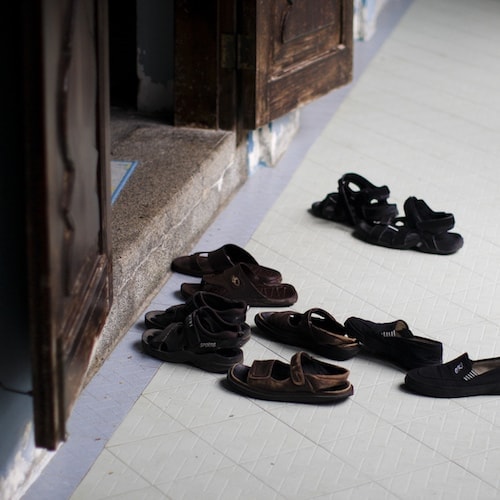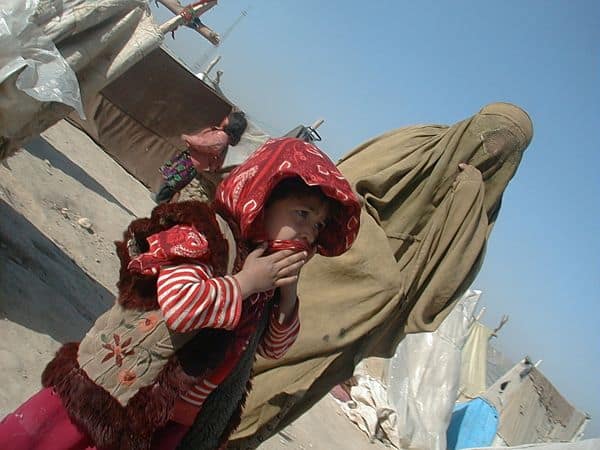Religious actors have become increasingly involved in development. Likewise, development actors like the World Bank have also become interested in religion (especially the religion of the communities they work with). Curiously, the juxtaposition of religious and development organizations suggest that the two are not always so different: the World Bank’s faith in economics and laissez-faire theology makes it look a lot like religious organizations, and the neoliberal methods of mega-churches or mega-mosques are reminiscent of development organizations. And yet, it is often taken for granted that religion and development are two distinct fields, each with its own type of actors, worldviews, and practices. Similarly, development studies and religious studies have largely remained two separate areas of study in the academic world. Unsurprisingly, blind spots abound.
 The “Religion in the Age of Development” Conference on 7-8 June 2018 – the capstone event of the Luce Foundation funded “Religion and NGOs in Asia” project at the National University of Singapore – was organized to explore the myriad of encounters between religion and development: not only how do development and religious organizations interact, but how religious techniques diffuse into development organizations and vice versa, and why we tend to think of religion and development as separable in the first place. In this report, rather than essentialize either “religion” or “development,” we synthesize the thirteen conference presentations into two broad types of encounters: (1) how encounters mutually constitute religion and development as opposites; and (2) how encounters mutually transform the practices of religion and development.
The “Religion in the Age of Development” Conference on 7-8 June 2018 – the capstone event of the Luce Foundation funded “Religion and NGOs in Asia” project at the National University of Singapore – was organized to explore the myriad of encounters between religion and development: not only how do development and religious organizations interact, but how religious techniques diffuse into development organizations and vice versa, and why we tend to think of religion and development as separable in the first place. In this report, rather than essentialize either “religion” or “development,” we synthesize the thirteen conference presentations into two broad types of encounters: (1) how encounters mutually constitute religion and development as opposites; and (2) how encounters mutually transform the practices of religion and development.
Constitutive encounters: the politics of what “religion” and “development” mean
What even counts as “religion” or “development” is shifting depending on cultural, political and historical contexts. Yet, religion and development are often positioned as opposites: sometimes, religion is cast as traditional and nostalgic as opposed to development as modern and scientific. Other times, through Sarah Kelman’s juxtaposition of Malaysian development plans with Islamic permaculture, development is cast as materialistic and worldly in contrast to religion’s portrayal as spiritual and otherworldly. In yet other instances, as Lorraine Aragon shows in the example of growing intellectual property law pushed by the Indonesian state, development entails a neoliberal and individualistic understanding of ownership whereas Islam focuses on ownership by the collective and transcendental. The shifting binaries of religion and development thus make them, in the words of Michael Feener and Philip Fountain (in their keynote), a “moving target”.
Pinning down what “religion” and “development” mean is difficult because it is not something that can be decided once and for all time by the editors of the Oxford English Dictionary. Imams, missionaries, the post-colonial state, World Bankers (and dictionary editors too) each are, and have been, in constant negotiation over what these terms mean depending on where they sit.
Each of the above dichotomies of religion and development are thus political contests across time and space. This politics is hardly symmetrical: generally, in “the age of development,” religious organizations have more work to do to adapt to secular, modern and neoliberal notions of “development.”
We perceive at least three types of politics. The first is rational-strategic politics. For example, David Tittensor illustrates how the Islamic Turkish organization, the Gülen Movement, actively pursues a secular appearance to escape surveillance by nation-states who are suspicious of Islamization; likewise, Malini Bhattarchajee shows how Youth for Seva also takes on a veil of secularization and downplays its Hindu roots, attracting Indian Muslim volunteers who wish to escape Islamic practices. In both cases, the “secular” appearance is a rational and instrumental strategy used by religious organizations.
The second type of politics, subversive politics, constitutes as “religion” in a way that subverts hierarchies within development thinking. For example, Giuseppe Bolotta illustrates how Catholic schools with a secular mandate subversively undermine the social hierarchy within the Thai developmental state through murals portraying ethnic minority children sitting on Jesus’ lap. For those who see themselves as oppressed by the developmental state, this version of Catholicism is hardly traditional or nostalgic, but liberating and progressive. Shifting to global politics, Robin Bush shows how the internationalization of Muhammadiyah’s humanitarian arm subverts the stereotype of Indonesia as a recipient of international aid (and the global hierarchy between developed and developing countries) through aiding refugees within Jakarta and Southeast Asia. Although Muhammadiyah’s Islam is often portrayed as conservative, it is also seen as a progressive force for Indonesians in the global developmentalist order.
The third type of politics is discursive politics. It entails how the very discourse of “religion” and “development” privileges one group over the other. For example, Filippo Osella’s paper traces how the meaning of “native” philanthropic practices such as zakat and sadaqa changed to benefit different groups: from being a sacrificial and devotional act of mercy; to becoming a tool to discipline the poor under British colonialism; to an act by good citizens to provide public goods for the nascent post-colonial nation-state; to becoming Corporate Social Responsibility in service of neoliberal markets.
Transformative encounters: development gods and rationalized missions
The encounters between religion and development, however, have not necessarily resulted in them becoming neatly diametrically opposed. For example, as Fahlesa Munabari explains, while the Islamic Defender’s Front (FPI) is known for advocating the ban on Lady Gaga in Indonesia, understanding it as a politico-religious organization renders its humanitarian motivation and development projects invisible – neither development or religion are incompatible. As Jonathan Benthall suggests in the case of Islamic Orphanages, neither is the encounter between religion and development a simple fusion of the two. Rather, encounters often transform the very heart of what either religious or development organizations do.
We find it helpful to think of two types of transformative encounters. The first is the religionization of development organizations, or, the use of religious technologies in the service of development. For example, Fountain describes how development monks got coopted by the Thai state after the Asian Financial Crisis of 1997, using religious affects towards the state’s developmentalist goals. Likewise, Feener explains how zakat is often used not just as a justification for giving to developmental projects, but affectively mobilizes Islamic communities to do so. Notably, not only has development been infused with religious meaning, but the meanings of “Buddhist” or “Islamic” have also been transformed.
The second transformative encounter is the developmentalization of religious organizations, that is, the use of developmentalist technologies in service of religion. Feener gives the example of the NGO-ification of Islamic organizations in Aceh after their encounter with the humanitarian and development industry following the tsunami. Similarly, Julia Huang describes how the Buddhist Tzu Chi Foundation takes medical science as “magical proof” of Buddhism. Likewise, Catherine Scheer discusses how missionaries have carved out a space in the development world as linguistic experts. What it means to practice science, being a linguistic expert, or being an NGO is hardly secular with these actors. Similarly although these developmentalized practices are purportedly in the service of religious ends, they also become developmentalist ends in themselves.
Conclusion: Messy Encounters
To sum up, this conference represents how the conversation has shifted from static conceptualizations of “religion” and “development” to more dynamic conceptualizations, being continually constituted and transformed. In practice, just as all these encounters are both constitutive and transformative, all transformative encounters involve entanglements of religionization and developmentalization. These encounters rarely play out neatly. For example, Peter Redfield suggests that developmentalist pursuits of egalitarianism treat life as both sacred (priceless) and profane (fungible, or priced) in the name of “effective altruism.” This is particularly evident from the diverse and heterogenous experiences of both religion and development in Asia, as presented in the conference. Asia is thus fertile ground for tracing, reflecting and parsing out the messy bi- and multi-directionality of their encounters.
So where to from here? One step forward might be to compare Religion in the Age of Development with its counterpart – Development in the Age of Religion: how has development thinking snuck its way into theology, or subverted religious orders?
If the appeal towards universalist notions of development was a response to the frustration of irresolvable religious conflict, can religion also be a response to frustrations in development? Although “Development” can itself be constituted as a kind of theology (as Feener and Fountain note), it is not any kind of religion: its enchantment seems to rely on a purported disenchantment and disinterestedness. Perhaps, the resurgent interest in religious experiences of humanitarianism might be partly a response to disenchantment with the iron cage of development and the profane improvement of bare life?
Featured image by Brian Jeffery Beggerly (flickr, CC BY 2.0).






